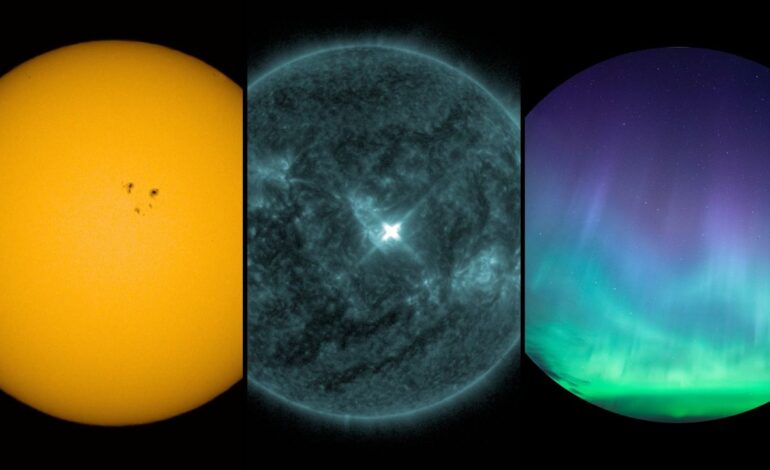Solar Flare Eruption Could Illuminate Skies with Auroras This Week

A significant solar event unfolded on August 5, 2025, as sunspot region 4168 produced a powerful M4.4-class flare, peaking at 11:58 a.m. EDT (15:58 GMT). This event marked a departure from a period of relative calm on the sun, as the active region emitted three M-class flares within just 24 hours. Accompanying the flare was a coronal mass ejection (CME), which has raised hopes for potential auroras visible on Earth later this week.
Despite the CME originating from a location almost directly facing Earth, its trajectory took an unexpected turn. Rather than heading towards our planet, the CME was predominantly directed westward. Nevertheless, space weather forecasters remain optimistic about a possible impact on Earth, with predictions suggesting a glancing blow could occur on August 8. If this impact materializes, it may trigger a minor (G1) geomagnetic storm, making northern lights visible as far south as northern Michigan and Maine.
Potential for Auroras This Week
Aurora chaser Jure Atanackov commented on the unusual behavior of the CME on the social media platform X, stating, “Virtually center disk flare, CME goes sideways. Just Solar Cycle 25 things.” His observations align with NASA’s WSA-ENLIL model, which indicates that the CME may still impact Earth despite its initial deviation. The model forecasts a potential arrival time around 2:00 a.m. EDT (06:00 UTC) on August 8, with a margin of error of eight hours.
The U.K. Met Office has also weighed in on the situation, noting that the central location of the sunspot at the time of the flare increases the likelihood of an Earth-directed component. However, they caution that confidence in this forecast remains low, reflecting the inherent uncertainties in space weather predictions.
Conditions for Auroras
If the CME does interact with Earth’s magnetic field, conditions may be favorable for auroras to extend into higher and mid-latitudes. The occurrence of auroras largely depends on the magnetic orientation of the CME’s field. For auroras to effectively manifest, the CME’s magnetic field must point southward, opposite to Earth’s magnetic north. Should it instead point northward, the interaction would be less effective, potentially resulting in minimal or no auroral displays.
As the scientific community monitors the situation, the anticipation builds for what could unfold in the coming days. For enthusiasts and observers alike, this week offers a tantalizing opportunity to witness the beauty of nature’s light displays, depending on the cosmic dynamics at play. As always with solar phenomena, staying informed is essential, and updates will continue to emerge as the situation develops.






